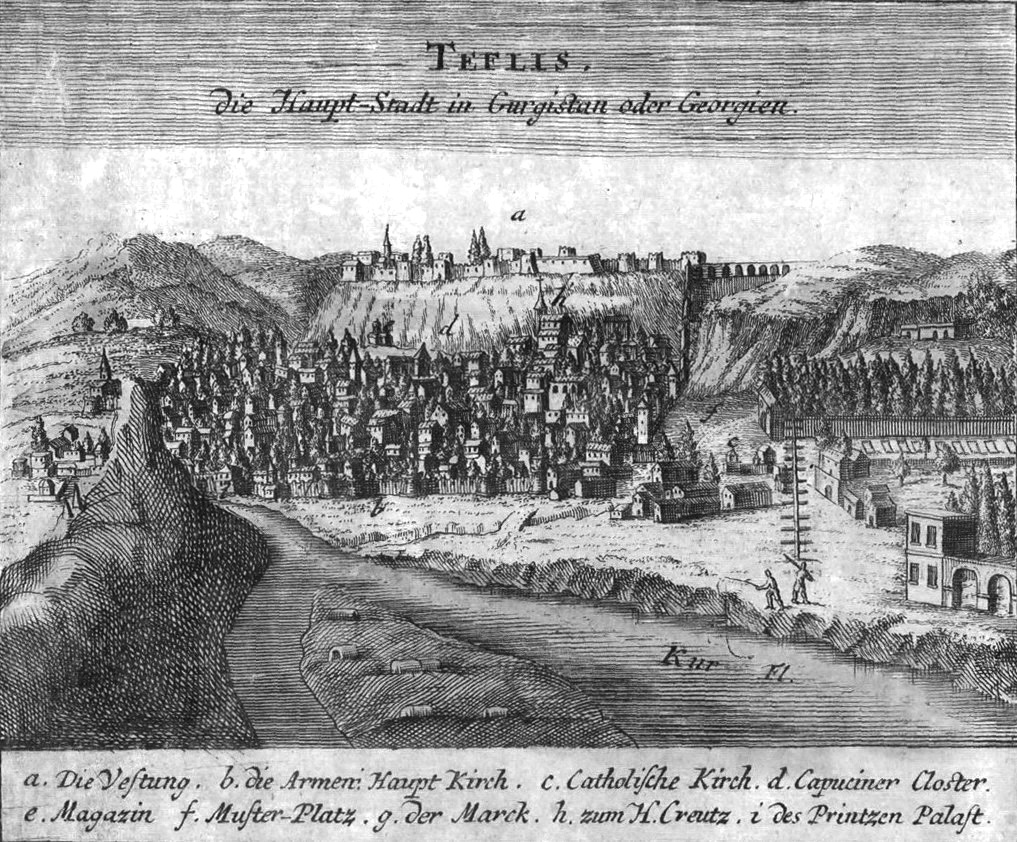Tbilisi is a gem of a city. Situated at a spectacular gorge at the muddy yellow-brownish river Jvaria, its old town looks like an 19th-century eastern European town, which was preserved in a time capsule for 200 years. When you stroll through the quiet, narrow alleyways and green squares between Rustaveli square and Meidan square you can't help but notice that homogeneity of the beautiful architecture. In fact the wooden houses with their fancy balconies and crumbling, yet colourful facades are all witnesses to the epoch, when modern Tbilisi was born: A time capsule which takes you straight to the year 1801.
 Of course Tbilisi is far older than 1801, the city's roots can be traced back to the 4th century. Nevertheless the city you perceive today is mainly a child of the 19th-century. Being situated at the crossroads of Europe and Asia and being a main stop at the ancient silk road, Tbilisi went through a lot of rough times. Being caught in a constant power struggle between the neighboring empires, the Persians, the Ottomans, the Russians, etc. the power relations in the area were literally changing with each passing decade. In the wake of its last conquest at the hands of Persian Emperor Aga Mohammed Khan in 1795 Tbilisi was completely burnt down to the ground, 22.000 of its inhabitants were taken into slavery. This fatal event marked the end of old Tbilisi.
Of course Tbilisi is far older than 1801, the city's roots can be traced back to the 4th century. Nevertheless the city you perceive today is mainly a child of the 19th-century. Being situated at the crossroads of Europe and Asia and being a main stop at the ancient silk road, Tbilisi went through a lot of rough times. Being caught in a constant power struggle between the neighboring empires, the Persians, the Ottomans, the Russians, etc. the power relations in the area were literally changing with each passing decade. In the wake of its last conquest at the hands of Persian Emperor Aga Mohammed Khan in 1795 Tbilisi was completely burnt down to the ground, 22.000 of its inhabitants were taken into slavery. This fatal event marked the end of old Tbilisi.
The birth of new Tbilisi came four years later, when Russian troops led by General Lasarus occupied the still traumatized city for the Russian crown. In 1801 Tbilisi became a part of the ever-growing Russian empire and the city was built anew from scratch in the style of the then modern French architecture with a unique Eastern European touch. The result of this building program is what you can still see today.
One of the most vivid sources from these early days of modern Tbilisi is the travel account of German official Julius von Klaproth. Von Klaproth, who was working for the Russian crown in St. Petersburg undertook a journey through the Caucasus in the years 1807/1808, only thirteen years after the annihilation of Tbilisi at the hands of the Persians. Here are some of his impressions from these days.
"Die Stadt ist sehr schlecht angelegt und gleicht, seit der letzten Zerstörung durch Agha Mohammed Chan im September 1795, halb einem Schutthaufen, und nur zwey Drittheile der Häuser sind wieder aufgebaut. Die Straßen sind so enge, daß in den breitesten nur etwa eine Arba bequem fahren kann, dahingegen in den Quer- und Nebenstraßen kaum Platz für einen Reiter ist, und sich bey kothigem Wetter oft zwei Fußgänger nicht ausweichen können. Die Häuser sind schlecht nach Georgischer Art aus gemischten Ziegel- und Feldsteinen erbaut, die mit Koth oder Thon zusammengefügt sind, und kaum funfzehn Jahre dem Zerfallen widerstehen. Die Stadt hat nur drey Thore, nämlich das Sophische, Muchranische, und auf der Südseite das Badethor oder das Sandschaische. Auf der andern Seite des Kur liegt eine neuerlich angelegte Vorstadt Awlabari, in der Syrer und Kurden wohnen. Man zählte sonst in Tiflis funfzehn Griechische Kirchen, in welchen der Gottesdienst in Alt-Georgischer Sprache gehalten wird, zwanzig Armenische und zwei Katholische, von denen die ältere Chareba heißt und dem heiligen Joseph gewidmet ist; jetzt aber den Einsturz droht, denn sie ist bey einem heftigen Erdbeben an verschiedenen Stellen geborsten. Die andere neue wurde erst vor einigen Jahren durch kaiserliche Unterstützung gebaut, und ist noch nicht ganz vollendet, obgleich schon Gottesdienst darin gehalten wird. Dicht daneben ist das neue Wohnhaus der Kapuziner-Missionaire, die jetzt drey Patres hier haben. Außer den Kirchen sind noch jetzt in Tiflis Mezdsheds, von welchen die eine für die Alitischen Perser, und die andere für die Sunnitischen Tataren bestimmt ist, die letzte wurde aber von Agha Mohammed zerstört, doch ist ihr schöner Minarett oder Thurm stehen geblieben. Sie wurde von Isaac Pascha, dem Türkischen Befehlshaber, 1710 erbaut."






Keine Kommentare:
Kommentar veröffentlichen